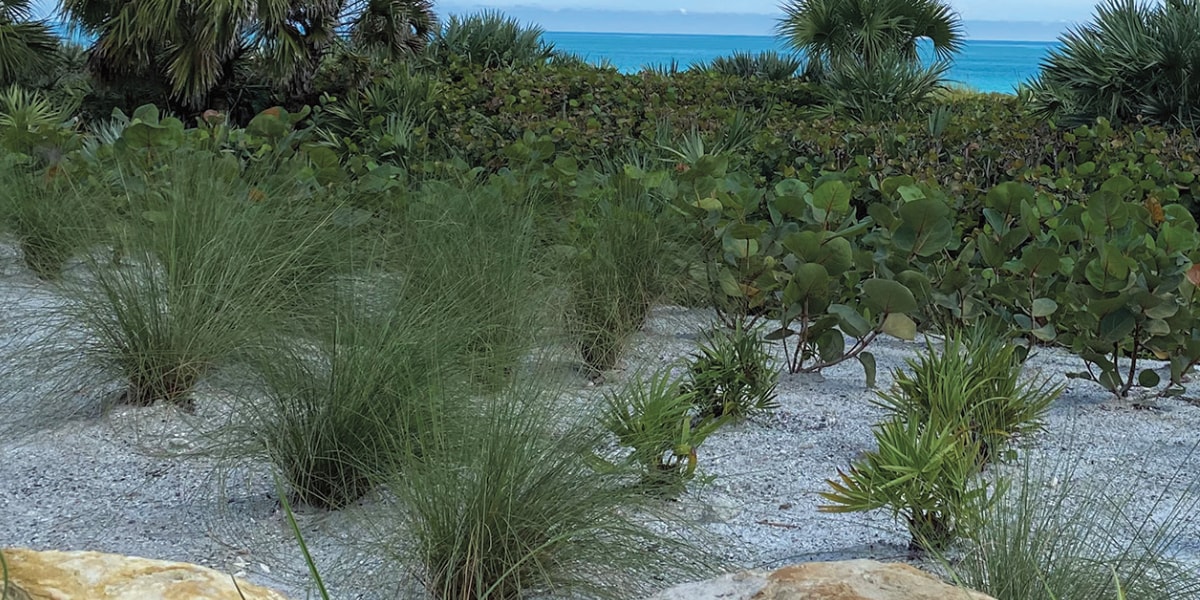
Shoreline living is part of life on the Treasure Coast. The Fall season brings the mullet run, the return of seasonal residents, the end of hurricane season, and king tides. While the return of bait fish and part-time residents contribute to our livelihood, hurricanes and high tides can create havoc to our shorelines. Whether you live on the ocean, Indian River Lagoon, or anywhere in our community, what grows on the shoreline is important to our entire ecosystem, providing habitat and essential erosion protection.
The dune is the upland habitat that provides shoreline protection for those who live on or near the ocean. A well established dune will protect beachfront properties from hurricane storm surges and high tides. The key element to holding a dune in place is the root systems of the vegetation. Since the dune is hot, dry, sandy, and salty, it takes very hardy native plants to establish a dune. Plants that thrive in these conditions include sea oats, sea grapes, cordgrass, muhly grasses, beach sunflower, railroad vine, and saw palmetto. Different plants should be used at different levels of the dune and planted in varieties to create a thriving ecosystem. Flowers, grasses, sea oats and vines should be closer to the ocean, while hardwoods and palms should be planted in more upland locations. Temporary irrigation is often required for new plantings, but once established, dune vegetation does not need to be irrigated and will flourish.
Lagoon shorelines in their natural state are mostly defined with mangroves. On the Indian River Lagoon, the three species of mangrove—red, black, and white—create their own aquatic habitats through an extensive above-ground and below-ground root system. This root system provides shoreline stability and protects the land from storm surges, high tides, and wave action created by boats. Every effort should be made to maintain healthy mangroves along the shoreline. Trimming should only be done by licensed professionals and disturbed areas should be replanted with mangrove seedlings. Red mangroves are those that live closest to the water. Upland from them are black and white mangroves. Plants that thrive near the lagoon are cocoplum, Simpson’s stopper, green buttonwood, and sea oxeye daisy. These will require irrigation during installation, but very little water thereafter.
Before you embark on any shoreline project, consult local regulations in your area. Different local, state, and federal agencies manage our shorelines. A knowledgeable engineer can advise on permitting. Proper plantings along our waterways will protect our community, add to the health of our ecosystem, and help preserve our coastal lifestyle.